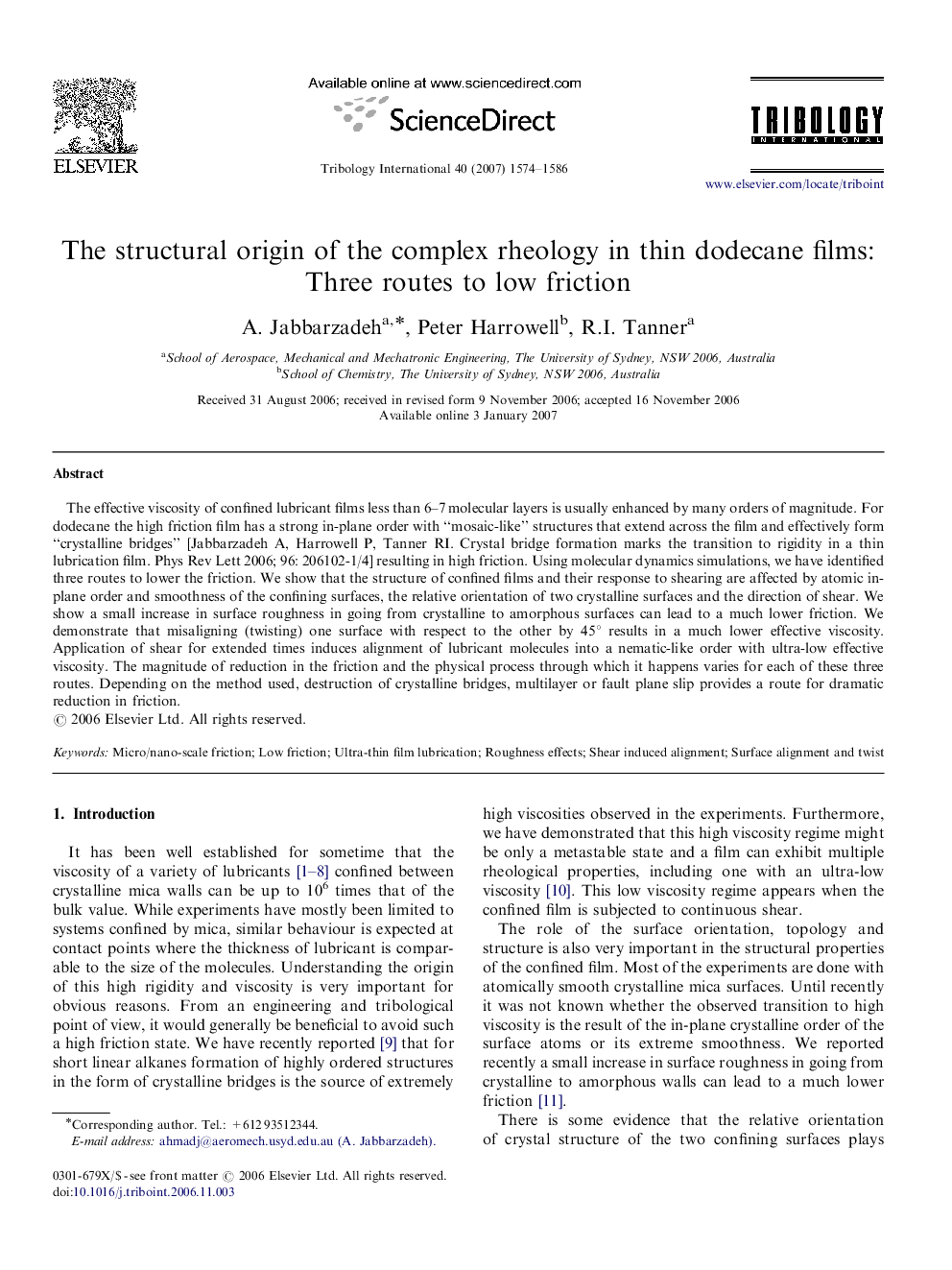| Article ID | Journal | Published Year | Pages | File Type |
|---|---|---|---|---|
| 616593 | Tribology International | 2007 | 13 Pages |
The effective viscosity of confined lubricant films less than 6–7 molecular layers is usually enhanced by many orders of magnitude. For dodecane the high friction film has a strong in-plane order with “mosaic-like” structures that extend across the film and effectively form “crystalline bridges” [Jabbarzadeh A, Harrowell P, Tanner RI. Crystal bridge formation marks the transition to rigidity in a thin lubrication film. Phys Rev Lett 2006; 96: 206102-1/4] resulting in high friction. Using molecular dynamics simulations, we have identified three routes to lower the friction. We show that the structure of confined films and their response to shearing are affected by atomic in-plane order and smoothness of the confining surfaces, the relative orientation of two crystalline surfaces and the direction of shear. We show a small increase in surface roughness in going from crystalline to amorphous surfaces can lead to a much lower friction. We demonstrate that misaligning (twisting) one surface with respect to the other by 45° results in a much lower effective viscosity. Application of shear for extended times induces alignment of lubricant molecules into a nematic-like order with ultra-low effective viscosity. The magnitude of reduction in the friction and the physical process through which it happens varies for each of these three routes. Depending on the method used, destruction of crystalline bridges, multilayer or fault plane slip provides a route for dramatic reduction in friction.
